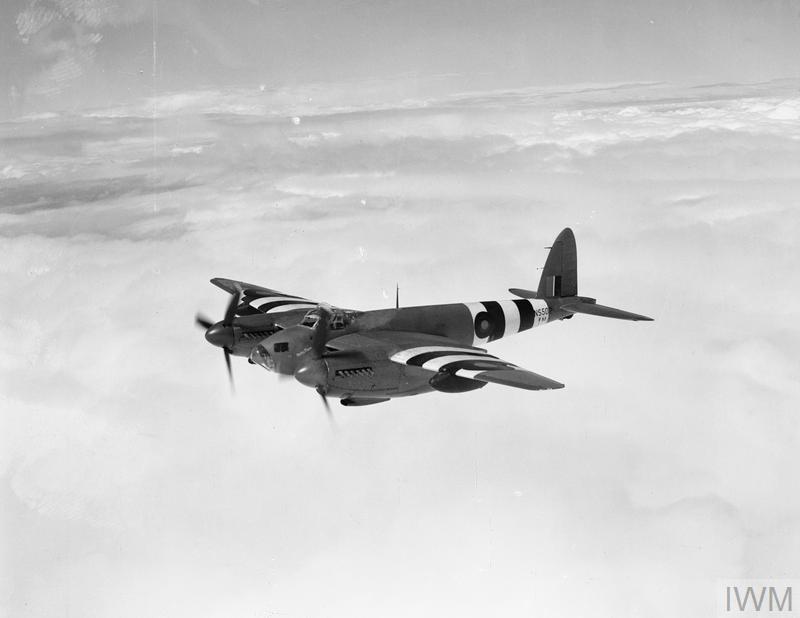The Wooden Wonder
RAF MOSQUITO AIRFRAME BUILT ENTIRELY OF WOOD

DAYTON, Ohio — De Havilland DH 98 Mosquito at the National Museum of the United States Air Force. (U.S. Air Force photo)
De Haviland D-98 Mosquito Mk. 35 restored to Mk XVI version. Painted as a plane of 653 Bomb Squadron. National Museum of United States Air Force, Dayton, Ohio, USA.
Engines: Two Rolls-Royce Merlins of 1,690 hp each
Maximum speed: 415 mph
Range: 1,955 miles
Ceiling: 42,000 ft
Once in service, RAF photo reconnaissance only used Mosquitos because they were fast and had a ceiling of 42,000. Very difficult for Germans to shoot down.
once in service, RAF photo reconnaissance only used Mosquitos because they were fast and had a ceiling of 42,000. Very difficult for Germans to shoot down.

once in service, RAF photo reconnaissance only used Mosquitos because they were fast and had a ceiling of 42,000. Very difficult for Germans to shoot down.
DE HAVILLAND DH.98 MOSQUITO Mosquito PR Mark XVI of 544 Squadron RAF. © IWM.

AIRCRAFT OF THE ROYAL AIR FORCE 1939-1945: DE HAVILLAND DH.98 MOSQUITO. (CH 14258) Mosquito PR Mark XVI, NS502 ?M?, of No. 544 Squadron RAF based at Benson, Oxfordshire, in flight. Copyright: © IWM. Original Source: http://www.iwm.org.uk/collections/item/object/205222128
McCain: “The aircraft is painted with ‘invasion stripes’ which were painted on aircraft immediately before D-Day to establish there were Allied aircraft.”

An armourer, Leading Aircraftman H Knight of Cliffe-at-Hoo, Kent, loads 19-lb 4.5-inch Photoflash bombs into a De Havilland PR Mark XVI of No. 140 Squadron RAF at B58/Melsbroek, Belgium, prior to a night photographic-reconnaissance sortie. Photo courtesy of Imperial War Museum, in the public domain.
Photo flash bombs were dropped by photo-reconnaissance aircraft to allow them to photograph areas at night. The bombs exploded at low altitudes and produced a brilliant white light fulfilling the function of a flashbulb.
posted and copyright 2021 by Charles McCain, author of An Honorable German, a WW2 naval epic featuring a heroic but deeply conflicted anti-Nazi German naval officer. The novel is about him and his fiance set against the backdrop of the war.

